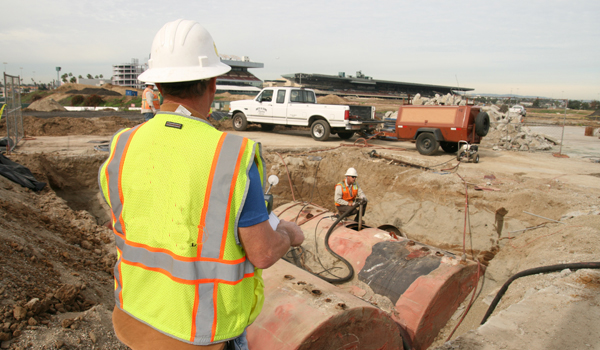Innovative Approaches to Groundwater Remediation: Solutions for a Cleaner Tomorrow

Groundwater contamination is a pressing environmental issue that affects communities around the world. Contaminants such as industrial chemicals, pesticides, and heavy metals can seep into groundwater sources, posing serious health risks to humans and ecosystems. Traditional groundwater remediation methods, such as pump-and-treat systems, can be costly, time-consuming, and ineffective in fully cleaning up contaminated sites. However, with advances in technology and science, innovative approaches to ground water remediation are emerging as solutions for a cleaner tomorrow.
One such innovative approach is the use of in-situ remediation techniques, which involve treating contaminants directly in the groundwater without the need for extraction and treatment above ground. In-situ remediation can be more cost-effective and efficient than traditional methods, as it minimizes the need for large-scale infrastructure and reduces the risk of contaminant spread during extraction. Techniques such as chemical oxidation, bioremediation, and permeable reactive barriers are being used to target specific contaminants and break them down into less harmful substances.
Another promising innovation in groundwater remediation is the use of nanotechnology. Nanoparticles, which are smaller than a billionth of a meter, can be injected into contaminated groundwater to target and remove specific contaminants. Nanotechnology offers the potential for more precise and targeted remediation, as well as the ability to treat contaminants that are difficult to remove using conventional methods. Research is ongoing to optimize the design and application of nanoparticles for groundwater remediation, with promising results in lab and field studies.
Phytoremediation is another innovative approach to groundwater remediation that harnesses the natural ability of plants to uptake and store contaminants in their tissues. Certain plant species, known as hyperaccumulators, have the ability to accumulate high concentrations of heavy metals and other contaminants from the soil and groundwater. By planting hyperaccumulator species in contaminated areas, the contaminants can be removed from the groundwater and stored in the plant tissues, which can then be harvested and disposed of safely. Phytoremediation is a sustainable and environmentally-friendly approach to groundwater cleanup that offers long-term benefits for soil and water quality.
Electrokinetic remediation is a cutting-edge technology that uses electrical currents to remove contaminants from the groundwater and soil. By applying a low voltage electrical field to the contaminated site, contaminants such as heavy metals, organic compounds, and radioactive elements can be mobilized and drawn towards electrodes for extraction. Electrokinetic remediation is particularly effective for fine-grained soils and low-permeability formations, where traditional remediation methods may be less efficient. This technology is still in the research and development stage, but shows great potential for enhancing the efficiency and effectiveness of groundwater cleanup efforts.
Advances in data analytics and modeling are also revolutionizing groundwater remediation efforts. By collecting and analyzing large amounts of data on groundwater flow, contaminant transport, and site conditions, researchers and engineers can develop predictive models to optimize remediation strategies. Machine learning algorithms and artificial intelligence tools are being used to identify patterns and correlations in complex datasets, leading to more targeted and efficient remediation approaches. By harnessing the power of data and technology, groundwater remediation projects can be more cost-effective, sustainable, and successful in achieving clean and safe drinking water sources.
As the global demand for clean water continues to rise, innovative approaches to groundwater remediation will play a crucial role in protecting public health and the environment. By embracing new technologies, scientific advancements, and sustainable practices, communities can work towards a cleaner tomorrow where contaminated groundwater sites are transformed into safe and healthy environments. The challenges of groundwater contamination are significant, but with the ingenuity and dedication of researchers, engineers, and policymakers, innovative solutions are within reach to ensure a sustainable future for generations to come.
